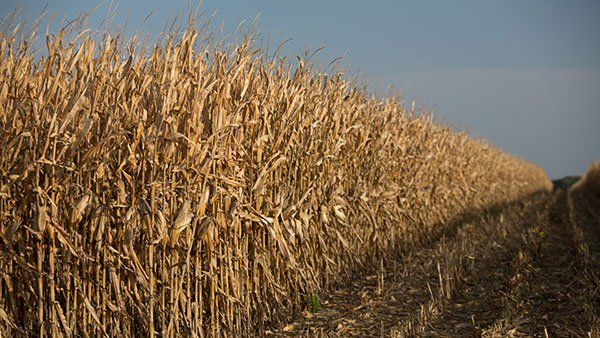AGRONOMICSUPPORT
YOU CAN TAKETO THE FIELD
October Crop Progress and Harvest Update
Northeast Corn Belt
We are now approaching the middle of October and harvest is underway for corn and soybeans across the Midwest. Harvest has slowed down in recent days with all the rain events that have occurred across the area. The main topic by far on corn this fall has been tar spot. Soybeans have had a more favorable discussion, but white mold has affected some acres.
Over the past few weeks, the LG Seeds Agronomy teams have been looking at fields and research trials evaluated hybrid performance for tar spot and other diseases. What we have been finding is that we have some hybrids that are performing very well against tar spot and a few that are struggling. Tar Spot can cause the corn plant to prematurely die which will in turn affect yield, test weight, and standability. With the notes we gathered over the past few years we are now in the process of adding a tar spot rating to our seed guides. This will help everyone place the right hybrid on the right acre.
With the recent rain and forecast for more rain to come, I want growers to be prepared to start scouting for ear molds. Gibberella is the main one of concern for the northeast. Gibberella ear rot begins at the tip of the ear and looks white, pink, to red in color. Wet, humid conditions favor the disease. Insect and bird damage may predispose ears to rot. Mycotoxins are typically produced that can be toxic to livestock.
Yields for the corn crop have been vary variable for this area. Where tar spot hit the heaviest, yields are being reported of being down anywhere from 25-50 bpa. Where tar spot isn’t present or where a grower applied a fungicide for tar spot protection, yields seem to be average to above average. Here at LG Seeds, we pride ourselves on bringing the best genetics to the marketplace and are seeing good product performance for many hybrids in our lineup when it comes to tar spot. So please discuss those options with your seed rep when needed.
On the soybean side of things yields are coming in above average and quality is good. Lodging of the plants is slowing down harvest in a few areas. Because of the ideal growing conditions this summer, plants grew taller than normal and have lodged now that harvest is here. White mold was an issue in a few areas but overall, the LG Seeds soybean lineup has a good tolerance to that disease.
As we continue with harvest and near November, remember to please contact your LG Seeds DSM with questions. We can help guide you through difficult decisions when it comes to managing tar spot and other diseases. Everyone please have a safe and successful harvest season.
North Central Corn Belt
We are past the first week of October and harvest is rolling right along. We had a few rain delays but overall, I would say we are ahead of normal. Soybean harvest is nearing the end in most places and by the end of this week should be finished. Just like the rainfall across the region, the yields have been all over the board. Where we received timely rains, the yields have been outstanding. We have even had a few plots that have come off in South Dakota with averages in the mid-60s on dryland. Performance has been strong with both XtendFlex and Enlist trait platforms. Where we were heat and drought stressed, I am hearing a lot of 30 to 40 bpa, which is still good given the circumstances.
Across Minnesota, South Dakota and North Dakota, PCR corn tours wrapped up last week. I have really been impressed with performance especially in areas that were on the shorter side of moisture compared to normal. Genetics and farming practices have really been the large driver of this as we are pulling off yields I didn’t think were possible given how dry it has been. One thing that stands out when looking at our unique germplasm is that the plant health and staygreen are outstanding when compared to our competitors. Overall, I would say our corn yields are better than expected but average to slightly below average. Again, where we received timely rains, we are seeing yields of 200+ bpa. Corn harvest is mostly just getting started in South Dakota and North Dakota. Minnesota seems to be a little ahead, as there are areas that started on corn prior to starting soybean harvest. Harvest moistures are dropping fast and its hard to find corn over 22% already. Stalk quality is something to be watching out for as crown rot and anthracnose are weakening the standability and we are sure to get days with high winds so be on the lookout for that if you haven’t already seen it.
Lastly, be on the lookout for plot data this fall. The DSMs and dealers have done an outstanding job of getting locations planted so that we can test our products in your local environment. Be safe and take the time to enjoy the harvest season!





